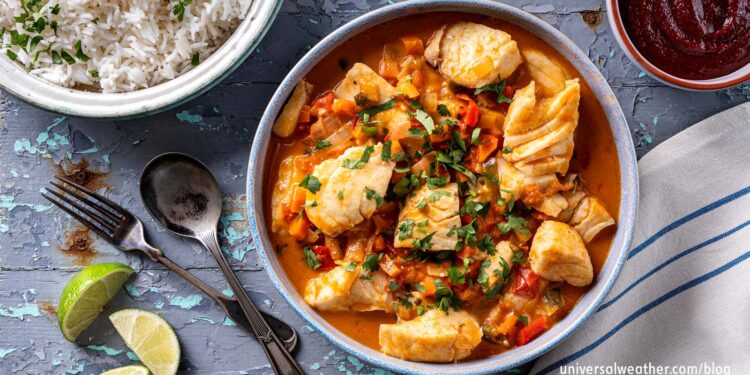Brazilian Flavor Influences – Part 1: In-Flight Catering Options and Tips

This is a post by author Richard Peterson. Richard is the general manager and executive chef for Air Culinaire Worldwide, with the headquartered kitchen in Tampa, Florida. Air Culinaire Worldwide also has kitchens in Aspen; Boston; Chicago; Dallas; Denver; Las Vegas; London; Long Beach; Miami; New York; Paris; San Francisco; Seattle; Van Nuys; West Palm Beach; and Washington, D.C. In addition, Air Culinaire Worldwide provides in-flight catering services at airports around the world via hundreds of catering partners. Richard is an expert in catering for business aviation and can be contacted at richardpeterson@airculinaire.com.
This business aviation blog post is part of a series on Brazilian flavors to consider when ordering catering.
Brazilian dishes have made their way into menus and cuisine options throughout the world. Many of these iconic dishes, and flavor profiles, can be recreated by experienced in-flight caterers – whether or not you’re actually operating to/from Brazil. Next time you’re flying, why not consider a “moteja” or “churrascaria” for lunch or perhaps the Amazon’s “pacu” fish ribs as a dinner entree?
The following is an overview of what you should know about Brazilian cuisine:
1. Brazil offers many cuisine options
Foods and cuisine styles in Brazil vary vastly throughout the country. Selections of grilled meats, traditionally served family style, are very popular in the southern region, close to the border with Argentina. This is called “churrasco” or “churrascaria,” and is similar to the Spanish “asado” in other Latin countries or even barbecue in America. “Moteja” is a popular seafood entree traditional in regions of Brazil that are close to the ocean. Meanwhile, in the Amazon region, “pato no tucupi” (duck in tucupi sauce) – a dish featuring local wild duck – is very popular.
2. Spice profiles vary across the country
The farther north you go in Brazil, the heavier and hotter the spices tend to be. In the south, for example, selections of grilled meats typically have very light spice profiles. Meats may simply be rubbed with rock salt and marinated in milk and parsley. Cuisines from the north, on the other hand, often involve more pronounced spice profiles. Pato no tucupi, for example, is spiced with a fermented juice from the “manioc,” or tapioca plant, to add acidity to the dish. Note that tapioca needs to be carefully prepared, in a certain way, or it’s poisonous.
3. Be mindful of limitations at FL450
Some items – such as fried foods – may not hold well on longer flights due to cabin pressurization and lack of moisture in the air. There are techniques, however, for successfully reheating fried foods, and your in-flight caterer can explain these. For many Brazilian dishes – such as stews – it’s important to keep ingredients and spices separate prior to reheating. Traditional Brazilian grilled meats can translate successfully to an aircraft cabin environment with individual plate servings accompanied by items such as rice or vegetables and salad on the side.
4. Tips for catering in Brazil
It’s best to allow your caterer 24-48 hours advance notification for catering requests to ensure the order is delivered on time. Be aware that Brazil is one of the most expensive regions in the world for in-flight catering, and prices typically increase when large events are taking place. For best results, ask your caterer what’s in season and what they do well. Ensure that refrigeration is available at the airport in the event catering is delivered early.
5. Sourcing Brazilian flavors outside Brazil
Most ingredients used in Brazilian cuisine can be sourced outside the region by qualified in-flight caterers. As the names of the products and ingredients may be different, it’s important to work with your caterer to ensure the food you want is obtained. Certain items – such as the local cheese breads (“pao de queijo”) or pacu fish – may be difficult, or not possible, to source outside Brazil. Your in-flight caterer may be able to replicate some of these dishes, but the cuisine may not exactly mimic local dishes due to differences in available ingredients.
Conclusion
Many types of Brazilian cuisines translate well in terms of airborne catering applications. The secret is to work with an experienced in-flight caterer and to be willing to take the risk of trying something new.
Questions?
If you have any questions about this article or have other questions about in-flight catering, contact me at richardpeterson@airculinaire.com.
Stay tuned for Part 2, which covers regional flavors for Brazil.




